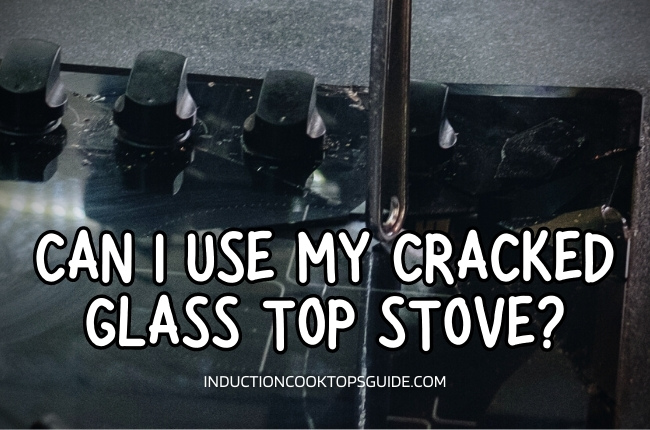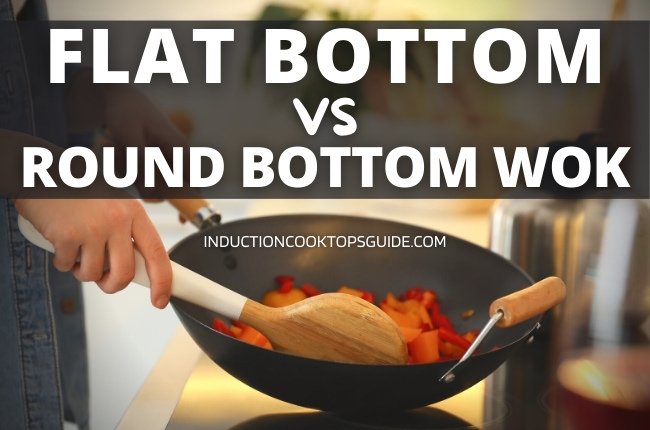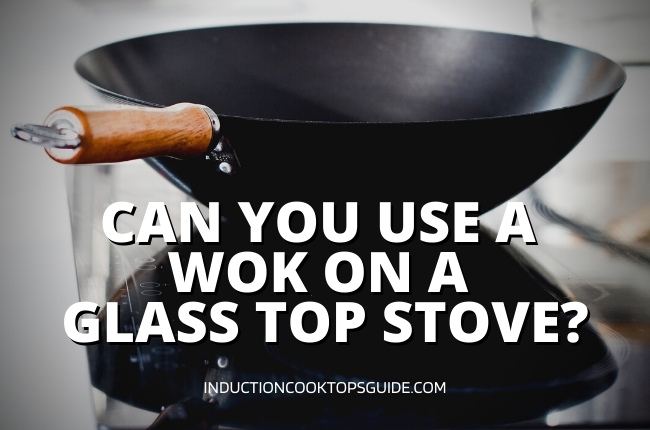One must-have for home cooks who love to delve into Asian cuisines or cook quick stir-fried meals is a wok. They have versatility, durability, and excellent heat distribution. A wok always works and looks better when paired with a gas stove.
But what if you don’t have a gas stove? Can you use a wok on a glass top stove?
Can you use any pan on a glass-top stove?
A glass-top stove adds a sleek and modern appearance to your kitchen. The smooth, black finish of the glass-ceramic blend makes for easier clean-up and more counter space.
Unlike stovetops with exposed burners, the glass surface allows a faster cool-down and warm-up period and relatively even heating due to the flat surface. They also pose a reduced risk of fire and accidental burns.
If you want to buy a glass top stove, you must know they’re not made the same. A few have tempered glass, but most are a tough ceramic and glass blend, which gives it resistance to shattering at high temperatures.
Glass stove tops are either electric, radiant, halogen, or induction.
In essence, the first three fall into the same umbrella as they transfer heat through conduction, albeit having different heating elements.
On the other hand, induction stovetops operate using a magnetic field to heat the cookware directly.
While they are built to be tough, glass stove tops are still fragile. Two of the biggest reasons they develop cracks are extreme temperature (e.g., thermal shock and prolonged exposure to heat), and impact from cookware.

The latter is especially something you can prevent. Hence, not every pan or pot is suitable for your glass stove top.
Generally, what you want are lightweight, flat-bottomed, and smooth pans.
Stainless steel and aluminum, especially of the anodized or multi-clad type, are good options.
The weight of your chosen cookware is highly crucial since you don’t want a pan to get dropped on your glass top stove because it’s too heavy to carry in the first place.
Copper and enameled cookware may leave a residue that can stick to your cooktop, affect its performance, and leave permanent scratches. This is the case for unclean cookware and spilled food.
When using an induction stove top, there’s one other requirement you must keep in mind: your cookware needs to be ferromagnetic, i.e., if you stick a magnet to its bottom, it should stay there.
Magnetic stainless steel, enameled cast iron, and multi-clad with copper or aluminum core are your go-to materials.
If you have round-bottomed cookware like woks that you want to try on your glass stove tops, you can do so. It has a few caveats and precautions, but this article explores the hows below.
How to use a wok on a glass top stove
When you picture a wok, it’s typically heavy and with a round and textured base— perfect for the traditional gas but seemingly the entire opposite of what is compatible with the fragile glass stove top.
But that picture is incomplete. Nowadays, you can have a flat and round-bottomed wok made of compatible material for your stovetop of choice.
Flat or round

Flat-bottomed woks are ideal for glass stove tops. If you have an induction, do remember to ensure that the material of your wok is compatible with it.
A flat bottom guarantees a greater heat distribution due to bigger surface contact, but it also lessens maneuverability and increases the probability of warping the cookware. Hotspots can also develop as the wok’s bottom retains a significant amount of heat and has extended contact with the glass surface.
Since flat-bottomed woks have direct contact, forceful impacts are more likely to crack the glass-ceramic top.
On the other hand, round-bottomed woks need a wok ring to create a flat surface.
A wok ring can easily scratch the glass surface when moved, so that’s an extra precaution you must take. Don’t expect the same heat efficiency since, unlike an open flame, glass is a poor conductor of heat, and the wok ring makes heat conduction inefficient.
RELATED READ: Flat vs Round Bottom Wok
Type of Wok
Cast iron has excellent heat retention and is the traditional choice.
Because cast iron is heavy, you are unlikely to move it around, and when especially with the flat-bottomed ones, the heaviness adds to the stability and firm placement of the wok on the stovetop.
You can try a carbon steel wok for a glass top stove if you don’t like cast iron. It is cheaper, durable, very responsive to heat, and can withstand higher temperatures than cast iron. It also doesn’t need to be seasoned, but you can do so for better performance.
Stainless steel is also an option, but the non-stick coating can get damaged easily and may impart a different taste than the traditional wok.
Cooking with the wok

Here’s how to do it:
1. Set-up
To ensure stability, place the flat-bottomed wok firmly and gently on the burner zone before turning on the stovetop. The wok’s bottom should be approximately the same size as the zone to increase efficiency.
For round-bottomed ones, place the wok ring first and ensure that it can lift the wok by ½ to 1 inch from the glass surface.
If you’re using cast iron which retains heat a lot, it will help to have two burners on, one on low temperature and the other on high, so that when you need to reduce temperature, you can easily switch and avoid food getting burnt.
2. Preheat
Pre-heating would take a while, usually around 10 minutes. When you see the wok is slightly smoking, that’s your cue to proceed with the oil.
3. Add the oil
Coat the inside of the wok evenly by lifting the wok and swirling the oil inside. You’ll know it’s ready when the oil ripples or starts to sizzle.
4. Plan your timing
When putting your ingredients, toss in your veggies first, as they take a while to cook.
Don’t be tempted to double the portion despite the wok’s size, and always cut your ingredients in uniform sizes to ensure consistent cooking.
Lastly, only use spatulas with long handles to reach the bottom and keep food moving inside the pan.
5. Cool down
Do not let your wok cool down on your cooktop. This is especially true for induction, as the glass surface remains relatively cooler.
Letting it cool down may result in burnt food or, worse, a crack caused by thermal shock.
How do you season a wok on a glass top stove?
Seasoning is necessary to give your wok a non-stick quality, no matter the type of material.
Before proceeding to the steps below, consider buying oil with high smoke points, like grapeseed oil, as it allows you to reach higher temperatures without releasing potential toxins.
- Set your induction or electric stovetop to high for two minutes before decreasing its temperature to medium.
- Place 1-2 tablespoons of cooking oil on the wok and, using a paper towel to wipe, evenly coat the wok’s surface.
- When the oil at the bottom begins to smoke, lift the wok and start swirling the oil to coat the interior thoroughly.
- Allow the wok to cool down away from the cooktop.
- Repeat twice until you ensure a non-stick quality which you can observe with the interior’s darkened quality.
- Use a paper towel to remove excess oil.
- When using your wok afterward, use hot water and a bamboo brush to clean and remove residue instead of soap.
Best wok ring for glass top stove
A good wok ring will help keep your glass stove top scratch-free and your wok stable while you cook. It should also be able to concentrate and transfer the heat to the bottom of the wok adequately.
Your wok ring should typically be smaller than the burner zone. This way, the heat is concentrated at the round bottom of the wok instead of its sides.
PS. For induction, you must note that if the surface of the wok ring in contact is too small than the burner zone, there’s a tendency for the induction to not detect it. As such, you might need an experimentation period to ascertain the best performance you can get from your wok and your induction cooktop.
That said, here are five wok rings that work for most stovetops, including glass-ceramic ones.
- QHTY Wok ring— durable, heavy-duty, affordable
- Cngstar Wok ring— fits large-sized woks
- Mooduty stainless steel wok ring— can be used upside down to accommodate larger woks
- Wire wok ring— no rough spots, secure and rust-resistant
- Cast iron wok support ring— distributes heat well and is less expensive
Though wok rings are good enough as a medium, it’s still tricky to use a round-bottomed wok on a glass stove top, mainly because the heat transfer is inefficient. Hence, you must consider your cooktop’s type and size before purchasing a wok, and vice versa.

Leave a Reply